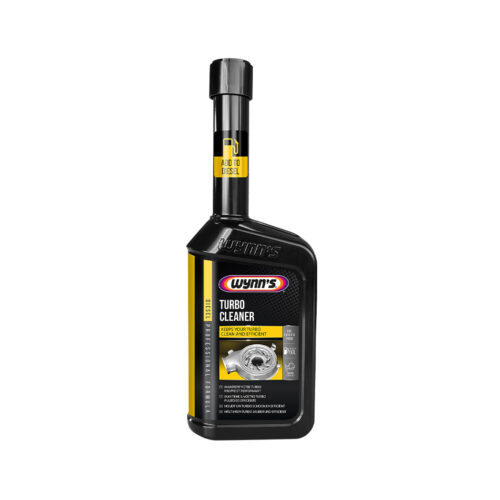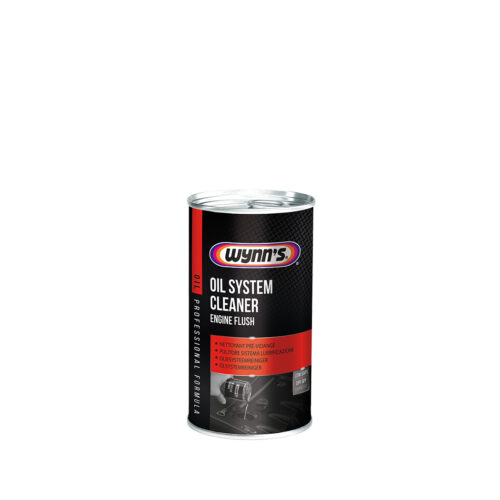Blue exhaust smoke is one of the most concerning issues for automotive mechanics and technicians. Typically, blue smoke indicates oil burning in the engine, which can lead to poor performance, decreased fuel economy and potential damage if left unaddressed. For professionals seeking an efficient solution, understanding the root causes and applying the correct treatments, such as Wynn’s specialised products, can be game-changing. In this guide, we’ll break down the sources of blue exhaust smoke and offer expert insights on how to clean it effectively.
What Causes Blue Exhaust Smoke?
Before getting into the solution, it’s essential to understand the common reasons behind blue exhaust smoke:
- Worn or Damaged Piston Rings: When piston rings are worn, oil can leak into the combustion chamber, causing it to burn along with the fuel.
- Valve Seal Issues: If valve seals are cracked or worn out, they can also allow oil to enter the combustion chamber, resulting in blue smoke.
- PCV Valve Malfunctions: A faulty PCV (Positive Crankcase Ventilation) valve can cause an imbalance in pressure, allowing oil to be sucked into the intake manifold and burned in the combustion process.
- Turbocharger Issues: If a turbocharger is worn or damaged, it may leak oil into the exhaust system or intake, contributing to blue smoke.
- Oil Overfill: Sometimes, a simple overfill of oil can also cause blue smoke, as the excess oil finds its way into the combustion chamber.
Knowing these underlying causes helps technicians make an accurate diagnosis and determine the right approach to fix blue smoke problems.
Step 1: Diagnose and Confirm the Source of Blue Smoke
To address blue exhaust smoke effectively, start by diagnosing the cause. Here’s how:
- Perform a Compression Test: Low compression in the cylinders may indicate worn piston rings.
- Inspect the Valve Seals: If the engine produces blue smoke upon starting, valve seals are likely culprits.
- Check the PCV Valve: A quick inspection can reveal if the PCV valve is stuck or faulty, as this can directly impact oil flow into the engine.
- Evaluate Turbocharger Components: Inspect the seals and bearings in the turbocharger for wear or oil leaks.
Proper diagnosis saves time and ensures that you’re addressing the root cause rather than treating only the symptoms.
Step 2: Treat Blue Smoke with Wynn’s Solutions
At Wynn’s, we offer professional-grade treatments designed to clean, protect and optimise engine performance, helping to eliminate blue smoke. Our specialised products tackle the common sources of oil burn and blue smoke, delivering results that are trusted by mechanics worldwide.
Wynn’s Oil System Cleaner
Wynn’s Oil System Cleaner is an ideal solution to remove sludge, varnish and other deposits from the oil system, which can contribute to oil burning and smoke. By dissolving and cleaning these contaminants, it helps restore the engine’s efficiency and minimises oil consumption.
Application: Add Wynn’s Oil System Cleaner to the engine oil before the next oil change. Let the engine run for 10-15 minutes to circulate the cleaner thoroughly. This treatment prepares the engine for fresh oil, improving the oil seal and reducing oil burn.
Wynn’s Turbo Cleaner
For turbocharged engines emitting blue smoke, Wynn’s Turbo Cleaner is a powerful solution that removes carbon and oil deposits from turbo components. It’s effective at clearing out build-up in the intake and exhaust systems, which helps prevent oil from burning and causing blue smoke.
Application: Use Wynn’s Turbo Cleaner by spraying it directly into the intake system with the engine running. This removes carbon build-up and restores turbo performance, helping reduce blue smoke emissions.
Step 3: Conduct a Post-Treatment Inspection and Test
After applying Wynn’s treatments, it is crucial to run the engine and observe the exhaust. Allow the engine to reach normal operating temperature, then perform a test drive, monitoring the exhaust closely. Here’s what to look for:
- Reduced or No Blue Smoke: Ideally, after a few minutes of running, you should notice a reduction or elimination of blue smoke.
- Improved Engine Performance: Enhanced engine smoothness and response are also signs that the treatments have been effective.
If blue smoke persists, further mechanical repairs may be required, such as replacing the valve seals, piston rings or turbocharger components.
Preventative Tips to Avoid Future Blue Smoke Issues
Using preventative measures can help avoid blue exhaust smoke and keep vehicles in top condition. Here are Wynn’s professional tips for long-term maintenance:
- Regular Oil Changes: Frequent oil changes prevent sludge build-up and keep the engine running smoothly. Always use the right grade of oil for each specific engine.
- Check the PCV Valve: Inspect the PCV valve periodically to ensure it’s working correctly. Replace it if it’s clogged or faulty, as it plays a critical role in managing oil flow.
- Turbo Maintenance: For turbocharged vehicles, use Wynn’s Turbo Cleaner regularly to prevent deposit build-up and ensure proper operation.
Trust Wynn’s for Reliable, Professional-Grade Solutions
When it comes to cleaning blue exhaust smoke and improving engine performance, Wynn’s has the solutions that automotive professionals rely on. Our products are formulated for effective, targeted treatments that clean, protect and maintain engines, reducing the need for costly repairs.
With over 80 years of experience, Wynn’s understands what it takes to keep engines running clean and efficiently. By using Wynn’s products, automotive professionals can give their customers peace of mind, knowing they are receiving a high-quality solution that addresses blue smoke issues at the source.
By following these steps and using Wynn’s products, mechanics can effectively tackle blue exhaust smoke, restoring vehicle performance and reducing emissions. Try Wynn’s professional-grade solutions today and experience the difference in quality and effectiveness that automotive professionals count on.



Leave A Comment